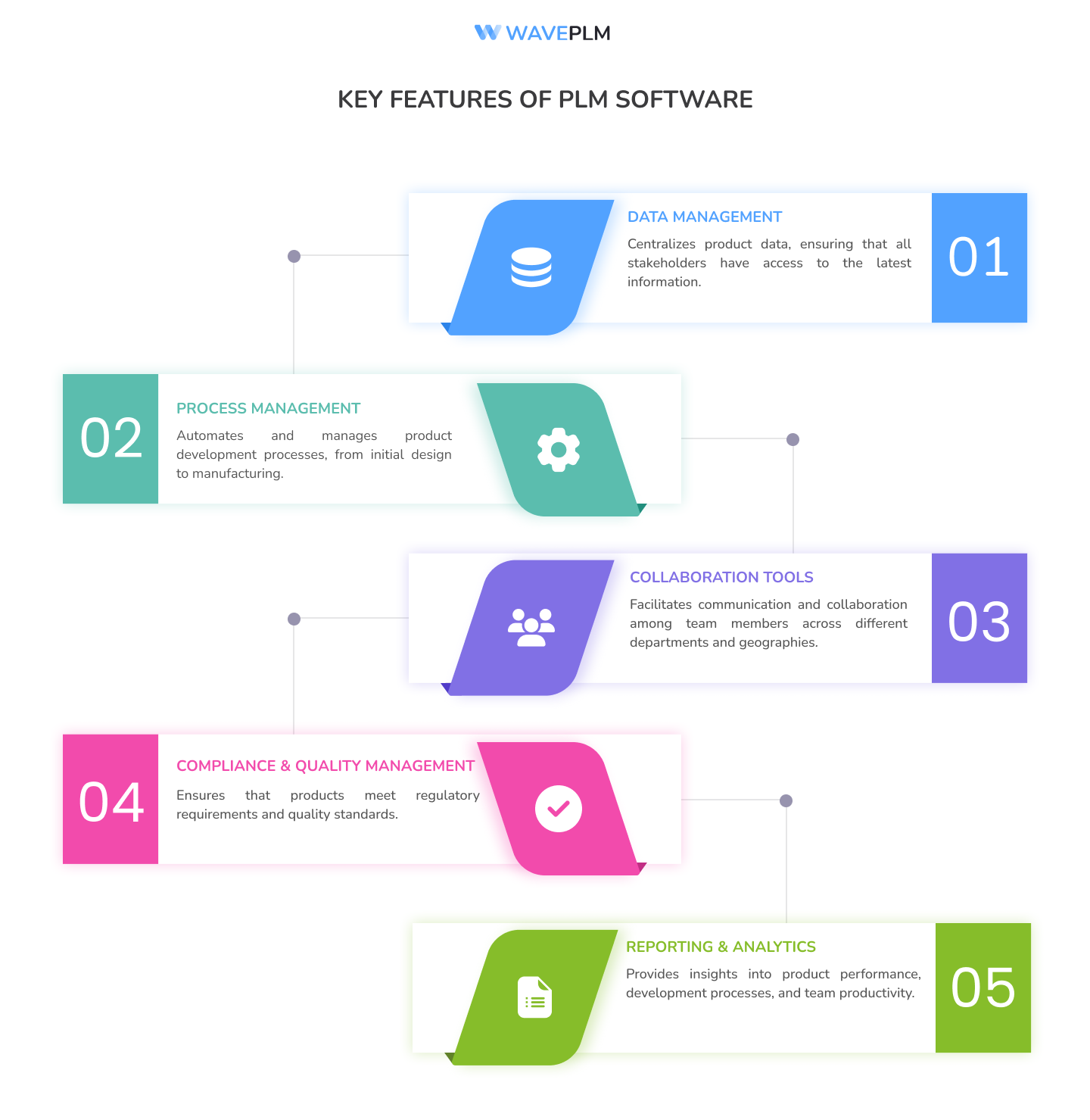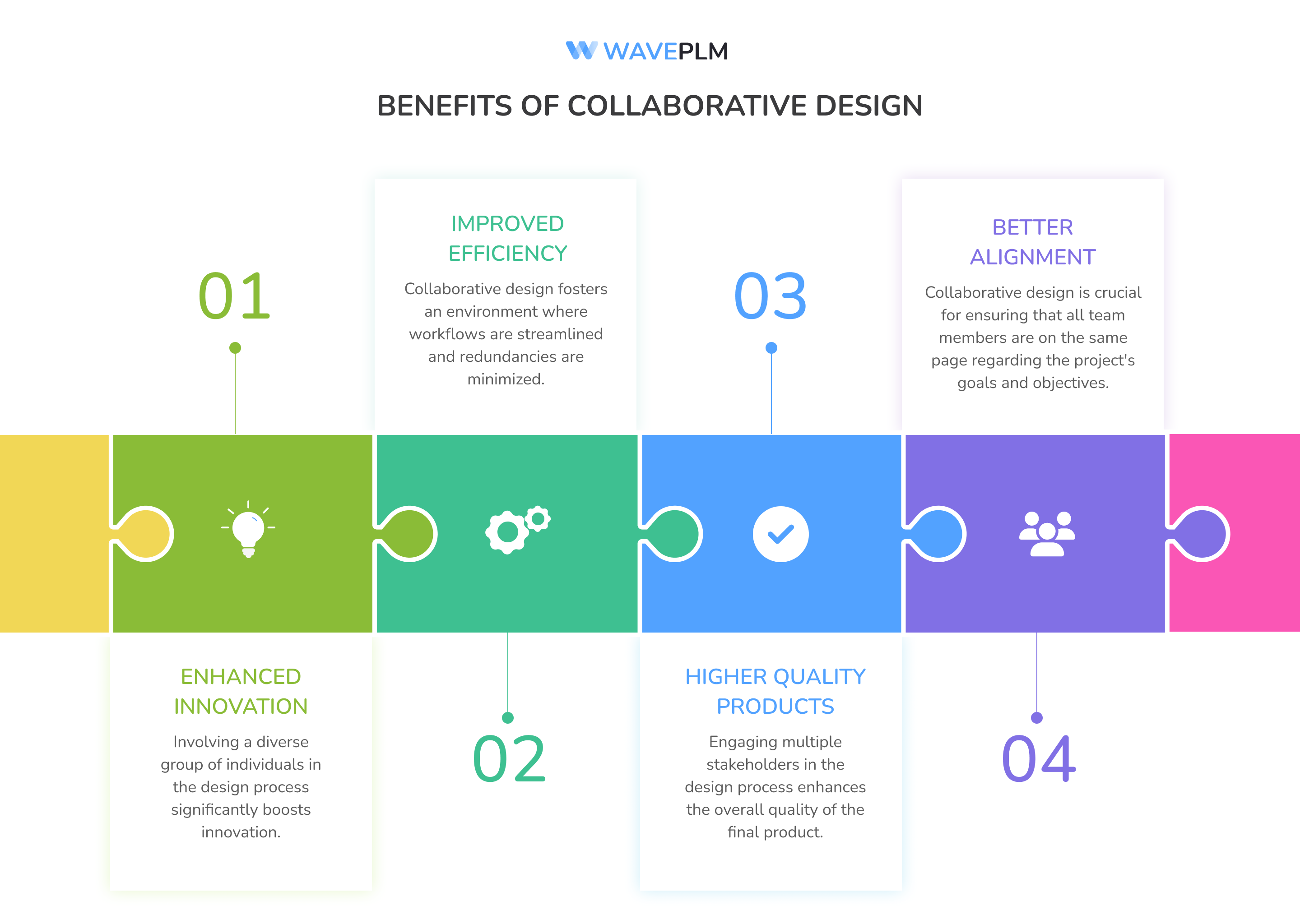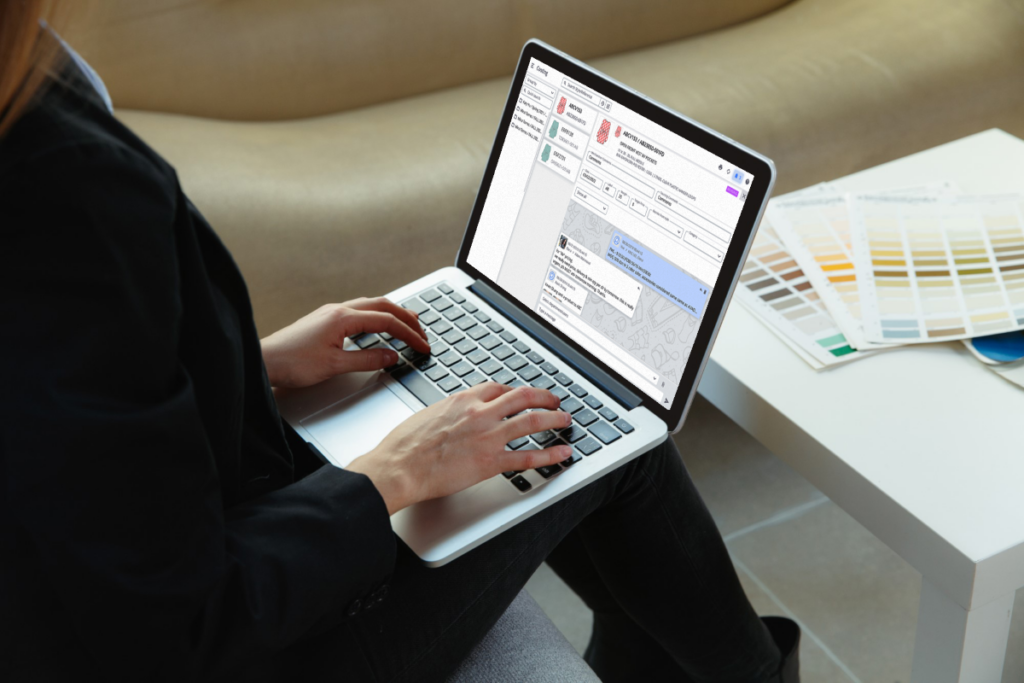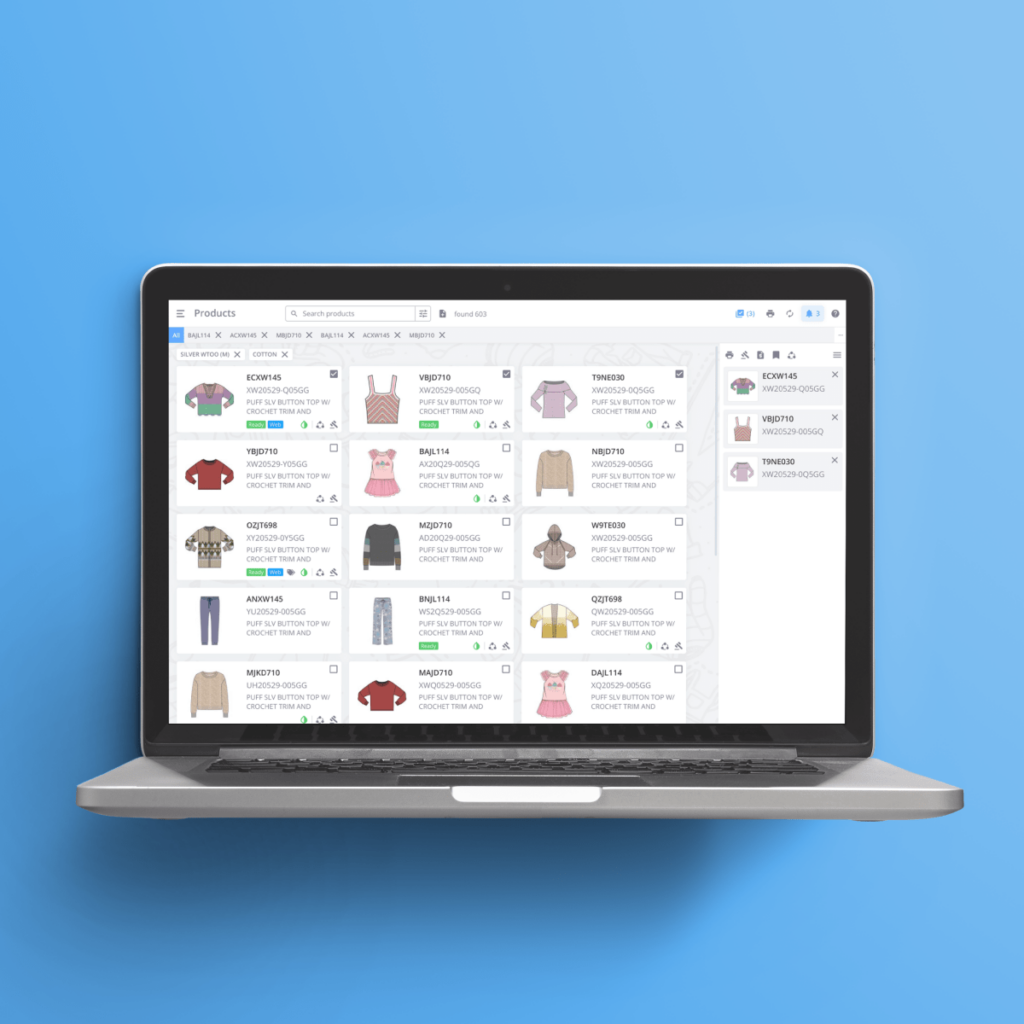
In today’s competitive and fast-paced business landscape, companies face immense pressure to innovate quickly and efficiently. Collaborative design has emerged as a key strategy to enhance innovation and streamline product development processes. Product Lifecycle Management (PLM) software, such as Wave PLM, plays a pivotal role in facilitating this collaborative approach. This article delves into the significance of collaborative design, the capabilities of PLM software, and how Wave PLM can maximize team efficiency and drive business success.
Understanding PLM Software
What is PLM Software?
Product Lifecycle Management (PLM) software is an integrated, information-driven approach used to manage a product’s lifecycle from inception through engineering design and manufacturing, to service and disposal. PLM integrates people, data, processes, and business systems and provides a product information backbone for companies and their extended enterprises.

Key Features of PLM Software
1. Data Management: Centralizes product data, ensuring that all stakeholders have access to the latest information.
2. Process Management: Automates and manages product development processes, from initial design to manufacturing.
3. Collaboration Tools: Facilitates communication and collaboration among team members across different departments and geographies.
4. Compliance and Quality Management: Ensures that products meet regulatory requirements and quality standards.
5. Reporting and Analytics: Provides insights into product performance, development processes, and team productivity.

The Importance of Collaborative Design
Defining Collaborative Design
Collaborative design refers to the practice of multiple stakeholders working together throughout the product development process. This approach leverages the diverse expertise of various team members, fostering innovation and accelerating problem-solving. It ensures that different perspectives are considered, leading to more robust and well-rounded products.
Benefits of Collaborative Design
1. Enhanced Innovation:
Involving a diverse group of individuals in the design process significantly boosts innovation. Each person brings unique ideas and perspectives based on their backgrounds, experiences, and expertise. This diversity fuels creative thinking and problem-solving, leading to groundbreaking solutions that might not have been conceived in a more homogeneous group. By harnessing this broad spectrum of insights, companies can develop innovative products and services that stand out in the market and meet a wider array of customer needs.
2. Improved Efficiency:
Collaborative design fosters an environment where workflows are streamlined and redundancies are minimized. When team members work together, they can quickly identify and eliminate unnecessary steps, ensuring that each phase of the development process is as efficient as possible. This collective approach allows for better resource management and faster turnaround times, ultimately reducing costs and accelerating the time-to-market for new products. By pooling their efforts and expertise, teams can achieve more in less time without compromising quality.
3. Higher Quality Products:
Engaging multiple stakeholders in the design process enhances the overall quality of the final product. When a diverse group of people is involved, there are more opportunities to catch potential issues and address them early. This proactive approach to problem-solving ensures that defects are identified and resolved before they become significant problems. The collective scrutiny and varied perspectives contribute to a more thorough vetting process, leading to products that are robust, reliable, and meet or exceed customer expectations.
4. Better Alignment:
Collaborative design is crucial for ensuring that all team members are on the same page regarding the project’s goals and objectives. By fostering open communication and active participation, collaborative efforts reduce the risk of misunderstandings and miscommunications that can lead to project delays and setbacks. When everyone understands and shares the same vision, there is a stronger sense of unity and purpose. This alignment not only improves team morale but also enhances productivity, as everyone works cohesively towards a common goal.

Challenges of Collaborative Design
Despite its many benefits, collaborative design can also present several challenges, including:
1. Communication Barriers: Differences in language, culture, and time zones can hinder effective communication among team members.
2. Data Silos: Without a centralized data management system, information can become fragmented, leading to inconsistencies and errors.
3. Version Control Issues: Managing multiple versions of design documents can be challenging, leading to confusion and duplication of efforts.
4. Workflow Inefficiencies: Without proper tools and processes, collaborative design can become disorganized, resulting in delays and increased costs.
How Wave PLM Enhances Collaborative Design
Wave PLM is a state-of-the-art PLM software that addresses these challenges and enhances collaborative design efforts. Here’s how Wave PLM helps maximize team efficiency:
1. Centralized Data Management
Wave PLM provides a single source of truth for all product-related information. By centralizing data, it ensures that all team members have access to the most up-to-date information. This eliminates the risk of working with outdated documents and reduces the time spent searching for information.
Benefits of Centralized Data Management
– Consistency: Ensures that all team members are working with the same information, reducing errors and inconsistencies.
– Accessibility: Makes it easy for team members to access the information they need, regardless of their location.
– Efficiency: Reduces the time spent searching for information, allowing team members to focus on more critical tasks.
2. Real-Time Collaboration
With Wave PLM, team members can collaborate in real-time, regardless of their location. The software supports concurrent engineering, allowing multiple users to work on the same design simultaneously. This not only speeds up the design process but also fosters a more integrated and cohesive team effort.
Benefits of Real-Time Collaboration
– Speed: Accelerates the design process by allowing multiple team members to work on the same project simultaneously.
– Integration: Ensures that all team members are on the same page, leading to more cohesive and integrated designs.
– Innovation: Encourages the sharing of ideas and perspectives, fostering innovation and creativity.
3. Enhanced Communication
Wave PLM includes communication tools such as instant messaging, discussion boards, and email integration. These features facilitate seamless communication among team members, ensuring that everyone is aligned and informed. Enhanced communication reduces misunderstandings and keeps projects on track.
Benefits of Enhanced Communication
– Clarity: Ensures that all team members have a clear understanding of project goals and objectives.
– Alignment: Keeps all stakeholders aligned, reducing the risk of miscommunication and project delays.
– Engagement: Encourages active participation and engagement from all team members.

4. Streamlined Workflows
Wave PLM streamlines workflows by automating routine tasks and processes. This reduces the administrative burden on team members and allows them to focus on more critical activities. Automated workflows also ensure that tasks are completed in a consistent and timely manner.
Benefits of Streamlined Workflows
– Consistency: Ensures that tasks are completed in a consistent and standardized manner.
– Efficiency: Reduces the time and effort required to complete routine tasks, allowing team members to focus on more critical activities.
– Timeliness: Ensures that tasks are completed on time, reducing the risk of project delays.
5. Robust Version Control
Managing different versions of design documents can be challenging. Wave PLM offers robust version control, tracking changes and maintaining a history of revisions. This feature ensures that team members are always working with the latest version and can easily revert to previous versions if needed.
Benefits of Robust Version Control
– Accuracy: Ensures that team members are always working with the most up-to-date information.
– Traceability: Tracks changes and maintains a history of revisions, providing a clear audit trail.
– Flexibility: Allows team members to easily revert to previous versions if needed.
6. Comprehensive Reporting and Analytics
Wave PLM provides comprehensive reporting and analytics tools that offer insights into project progress, team performance, and potential bottlenecks. These insights enable teams to make data-driven decisions and continuously improve their processes.
Benefits of Comprehensive Reporting and Analytics
– Visibility: Provides clear visibility into project progress and team performance.
– Insight: Offers insights into potential bottlenecks and areas for improvement.
– Decision-Making: Enables teams to make data-driven decisions, leading to better outcomes.

Case Study: Wave PLM in Action
Background
Consider a global fashion company that faced significant challenges with its product development process. The company had teams spread across multiple locations, and communication barriers, data silos, and workflow inefficiencies were common. These issues led to project delays, increased costs, and suboptimal product quality.
Implementation of Wave PLM
To address these challenges, the company implemented Wave PLM. The implementation process involved:
1. Centralizing Data: All product-related information was centralized in Wave PLM, providing a single source of truth for all team members.
2. Enabling Real-Time Collaboration: The company’s teams were able to collaborate in real-time, regardless of their location.
3. Enhancing Communication: Wave PLM’s communication tools facilitated seamless communication among team members.
4. Streamlining Workflows: Routine tasks and processes were automated, reducing the administrative burden on team members.
5. Implementing Version Control: Robust version control ensured that all team members were working with the latest information.
6. Utilizing Reporting and Analytics: Comprehensive reporting and analytics tools provided insights into project progress and team performance.
Results
The implementation of Wave PLM led to significant improvements in the company’s product development process:
– Reduced Time-to-Market: The company saw a 30% reduction in time-to-market for new products.
– Increased Team Efficiency: Overall team efficiency increased by 20%, with team members able to focus on more critical activities.
– Improved Product Quality: The company was able to identify and address potential issues earlier in the development process, resulting in higher-quality products.
– Enhanced Innovation: The collaborative design approach fostered by Wave PLM led to more innovative solutions and better alignment with customer needs.
– Cost Savings: Streamlined workflows and improved efficiency resulted in significant cost savings for the company.

Conclusion
Collaborative design is essential for modern product development, and PLM software is the key to maximising team efficiency. Wave PLM stands out as a powerful tool that enhances collaboration, streamlines processes and drives innovation. By adopting Wave PLM, organisations can ensure that their teams work more efficiently, reduce time-to-market, and deliver high-quality products.
For companies looking to stay competitive and innovate effectively, implementing Wave PLM can be a game-changer. Its robust features and capabilities make it an invaluable asset for any organization aiming to enhance their collaborative design efforts and maximize team efficiency.
For more information on how Wave PLM can transform your collaborative design process, visit our website.





Leave a Reply